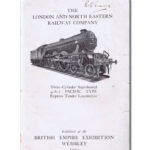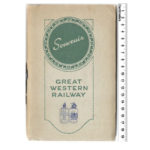Description
The British Empire Exhibition was held at Wembley on the site of the present National Stadium.
Originally intended to run from May to October 1924 it proved so successful that it re-opened for summer 1925. Consequently not all exhibits were on view in both years. Several railway companies and private loco builders had display stands at the Exhibition; in some cases they exhibited their latest locomotive, like LNER no. 4472 Flying Scotsman; this was joined in 1925 by GWR 4079 Pendennis Castle. Several other railway locomotives were exhibited: in 1925, the Southern Railway exhibited no. 866 of their N class, which was brand new, not entering service until 28 November 1925. The 1924 exhibition included a Prince of Wales class 4-6-0locomotive of LNWR design, dating from 1911, which had been built by the Scottish firm of Wm. Beardmore as a private exhibit. They had previously built similar locomotives for the LNWR, which in 1923 had become a constituent of the newly formed London, Midland andScottish Railway (LMS); when the exhibition closed in November 1924, the LMS bought the locomotive from Beardmore. Thanks to the LMS policy of appointing their CME on the basis of “Buggins’s Turn” locomotive policy was in disarray, and the “Prince” was the best large loco available, but it made a poor showing compared to the compact glittering “Castle” and the gleaming large “Scotsman”. All the participating railways had supporting displays. In 1925, the LMS had two. “Control” described in this booklet and “Signalling Model” which BTT will be making available at a future date.
“Control” describes the way in which “The Plan” – the timetable – could be monitored in real time and adjustments made if necessary to try and ensure punctuality of passenger trains and the efficient movement of freight. The system worked by the reporting of trains at various points to district control offices where the information was plotted visually on various types of display. An experienced controller could tell at a glance if things were running normally, or if a freight train needed to be held in a siding to avoid delaying an express, or a branch passenger train needed to be held as an important connection from a late running express. Instructions were issued by telephone as appropriate.
Early in my railway career, 50 years ago I spent some time working in York District Control, where the work was carried out using colour coded pencils on large pre-printed graphs plotting distance against time. The LMS methods used in the replica District Control Desks exhibited here were different, but with similar results. These days it is all computers, illuminated diagrams and touch screen monitors, but it still needs the skills and knowledge of an experienced controller to keep things running smoothly.
PREVIEW BELOW – MAY TAKE A WHILE TO LOAD.



Reviews
There are no reviews yet.